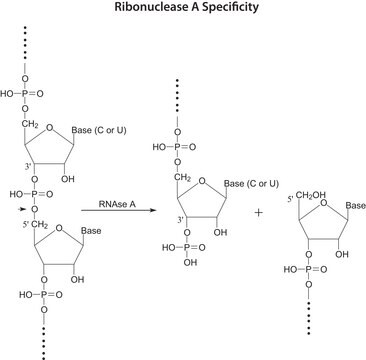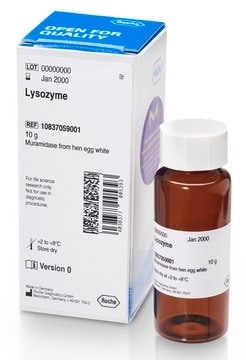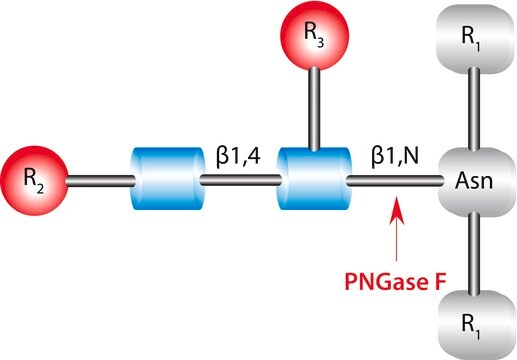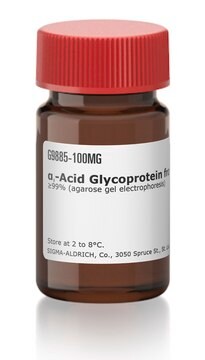Kluczowe dokumenty
R7884
Ribonuclease B from bovine pancreas
BioReagent, ≥50 Kunitz units/mg protein, ≥80% (SDS-PAGE)
Synonim(y):
RNase B
About This Item
Polecane produkty
pochodzenie biologiczne
bovine pancreas
Poziom jakości
linia produktu
BioReagent
Próba
≥80% (SDS-PAGE)
Postać
powder
aktywność właściwa
≥50 Kunitz units/mg protein
stężenie
≥60%
metody
cell based assay: suitable
przydatność
suitable for molecular biology
Zastosowanie
cell analysis
obecność zanieczyszczeń
protease ≤0.001 units/mg solid
temp. przechowywania
−20°C
InChI
1S/C9H14N4O3/c10-2-1-8(14)13-7(9(15)16)3-6-4-11-5-12-6/h4-5,7H,1-3,10H2,(H,11,12)(H,13,14)(H,15,16)
Klucz InChI
CQOVPNPJLQNMDC-UHFFFAOYSA-N
Szukasz podobnych produktów? Odwiedź Przewodnik dotyczący porównywania produktów
Zastosowanie
Działania biochem./fizjol.
Opakowanie
Uwaga dotycząca przygotowania
inhibitor
Hasło ostrzegawcze
Danger
Zwroty wskazujące rodzaj zagrożenia
Zwroty wskazujące środki ostrożności
Klasyfikacja zagrożeń
Resp. Sens. 1
Kod klasy składowania
11 - Combustible Solids
Klasa zagrożenia wodnego (WGK)
WGK 3
Temperatura zapłonu (°F)
Not applicable
Temperatura zapłonu (°C)
Not applicable
Środki ochrony indywidualnej
Eyeshields, Gloves, type N95 (US)
Certyfikaty analizy (CoA)
Poszukaj Certyfikaty analizy (CoA), wpisując numer partii/serii produktów. Numery serii i partii można znaleźć na etykiecie produktu po słowach „seria” lub „partia”.
Masz już ten produkt?
Dokumenty związane z niedawno zakupionymi produktami zostały zamieszczone w Bibliotece dokumentów.
Klienci oglądali również te produkty
Produkty
The use of PNGase Fast denaturing buffer and enzyme yielded results similar to a conventional 20-hour protocol with overnight digest while reducing workflow time to about 1 hour with a 15-minute digest.
Nasz zespół naukowców ma doświadczenie we wszystkich obszarach badań, w tym w naukach przyrodniczych, materiałoznawstwie, syntezie chemicznej, chromatografii, analityce i wielu innych dziedzinach.
Skontaktuj się z zespołem ds. pomocy technicznej









